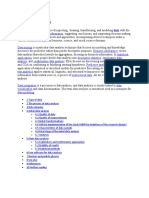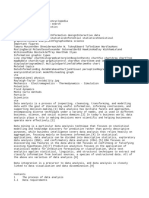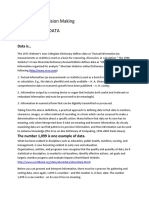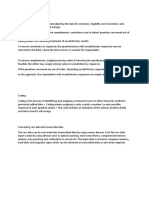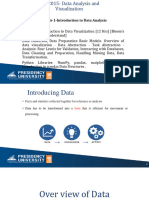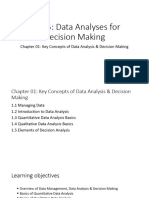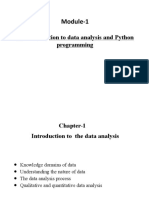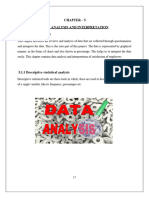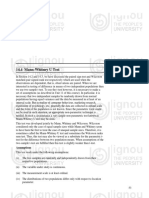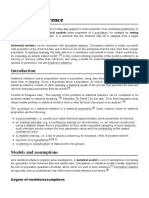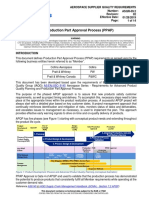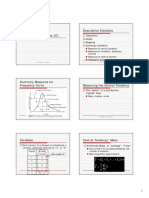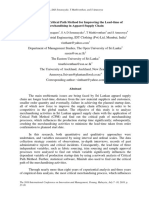0% found this document useful (0 votes)
18 views18 pagesWhat Is Data Visualization and Why Is It Important
The document outlines the fundamentals of data analysis and visualization, emphasizing the importance of interpreting data to extract meaningful information. It covers various types of data (qualitative and quantitative), analysis strategies, and methods such as data cleaning, modeling, and visualization techniques. Additionally, it highlights the significance of selecting appropriate visualizations to effectively communicate data insights and trends.
Uploaded by
elastechane57Copyright
© © All Rights Reserved
We take content rights seriously. If you suspect this is your content, claim it here.
Available Formats
Download as DOCX, PDF, TXT or read online on Scribd
0% found this document useful (0 votes)
18 views18 pagesWhat Is Data Visualization and Why Is It Important
The document outlines the fundamentals of data analysis and visualization, emphasizing the importance of interpreting data to extract meaningful information. It covers various types of data (qualitative and quantitative), analysis strategies, and methods such as data cleaning, modeling, and visualization techniques. Additionally, it highlights the significance of selecting appropriate visualizations to effectively communicate data insights and trends.
Uploaded by
elastechane57Copyright
© © All Rights Reserved
We take content rights seriously. If you suspect this is your content, claim it here.
Available Formats
Download as DOCX, PDF, TXT or read online on Scribd
/ 18



